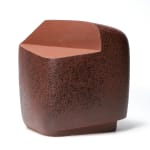Hayashi Yasuo 林康夫 Japanese, b. 1928
No 1, Work 作品 ’66-30, 1966
Stoneware
H10.2” x W11.0” x D10.0”
H26 x W 28 x D25.5 cm
H26 x W 28 x D25.5 cm
With Signed Wood Box
Sold
Further images
-
(View a larger image of thumbnail 1
)

-
(View a larger image of thumbnail 2
)

-
(View a larger image of thumbnail 3
)

-
(View a larger image of thumbnail 4
)

-
(View a larger image of thumbnail 5
)

-
(View a larger image of thumbnail 6
)

-
(View a larger image of thumbnail 7
)

-
(View a larger image of thumbnail 8
)

-
(View a larger image of thumbnail 9
)

-
(View a larger image of thumbnail 10
)

-
(View a larger image of thumbnail 11
)

-
(View a larger image of thumbnail 12
)

-
(View a larger image of thumbnail 13
)

-
(View a larger image of thumbnail 14
)

-
(View a larger image of thumbnail 15
)

-
(View a larger image of thumbnail 16
)

-
(View a larger image of thumbnail 17
)

-
(View a larger image of thumbnail 18
)

-
(View a larger image of thumbnail 19
)

Kazuko Todate, Professor at the Faculty of Art and Design Center of Liberal Arts, Tama Art University writes about the Shikokai movement: “In essence, Shikokai's ceramic objects are intricately...
Kazuko Todate, Professor at the Faculty of Art and Design Center of Liberal Arts, Tama Art University writes about the Shikokai movement:
“In essence, Shikokai's ceramic objects are intricately connected to the abstraction of automatism. This means that the method of creation is not grounded in detailed drawings or plans but relies on rough images or extremely sketchy outlines.
The artist determines the form as it unfolds before their eyes during the object's creation. While ceramics impose more restrictions compared to painting, this mindset of "thinking while making" has profoundly broadened the scope of expression in ceramic art.”


















